There are in museums small pieces from ancient Egypt, which are hardly paid attention. And usually they are very valuable.
Sometimes because they offer relevant information, other times because they invite us to reflect.
Wall Painting E2380 of RMAH in Brussels.
This is the case of this small wall painting from ancient Egypt now in the MRAH of Brussels. Its provenance is unknown, but the style of the drawing and the type of scene refers us to Thebes and the XVIII Dynasty.
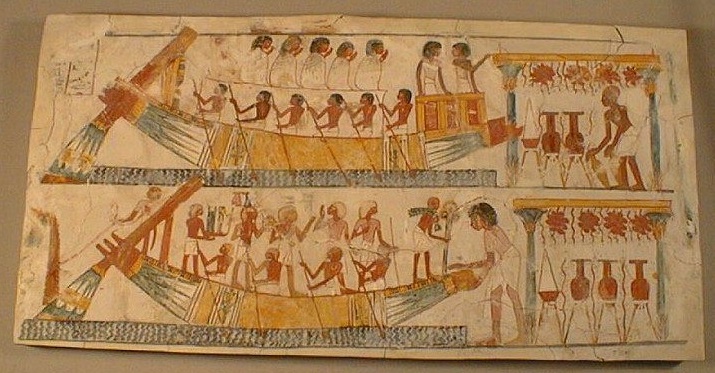
In this space of less than 75 cm x 40 cm the Egyptian artist depicted a moment of the funeral procession. Specifically, the cross of the Nile to the necropolis in the funerary boats.
The weak point of this painting is the lack of inscription; in ancient Egypt that meant that the work was unfinished. So to “read” the image is not possible in this case and we can just take information from the figures.
Description of the scene.
The boat on the lower register seems to be docking at the shore. The people on it are apparently bringing some funerary offers and they seem to be ready to disembark. This a very typical moment of the funerary ceremony of ancient Egypt: the arrival to the west bank of the Nile.
The boat of the upper register is a very typical icon of the art of ancient Egypt, specially during the XVIII Dynasty. Some oarsmen are moving the vessel, two men at the prow seem to lead the action and a group of people (usually mourners) are sitting over a kind of cabin. We find similar images in the tomb of Userhat (TT56), the tomb of Neferhotep (TT49).
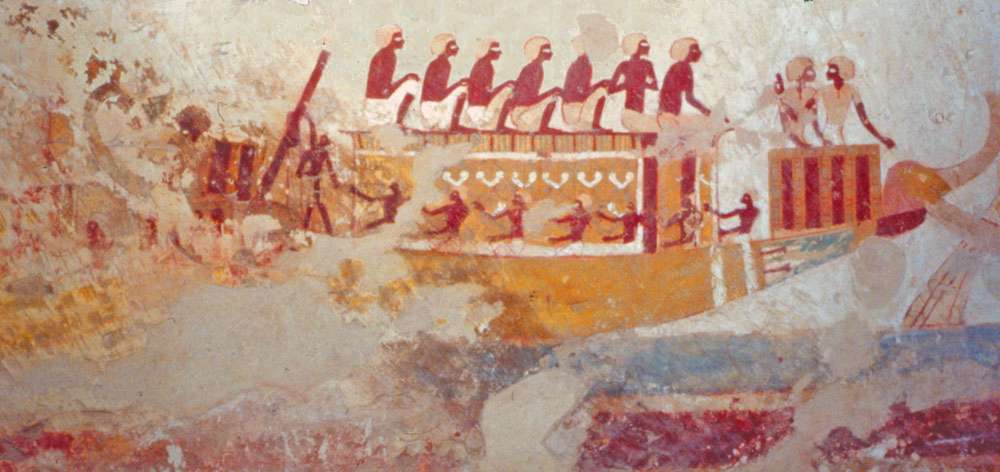
The Two Men of The Prow.
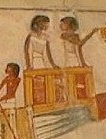
On the front side of the boat (right of the image) two men seem to have a conversation. They are usually the pilot and the depth sounder giving instructions to the helmsman.
However in the wall painting of Brussels one oh them is dressed with a kind of clothes very similar to those of a lector priest.
The lector priest recited the Ancient Egyptian sacred texts during the funerary ceremony and in this scenes he is not usually on this boat, but on the one with the corpse, as we see for instance in the tomb of Qar and Idu in Giza.
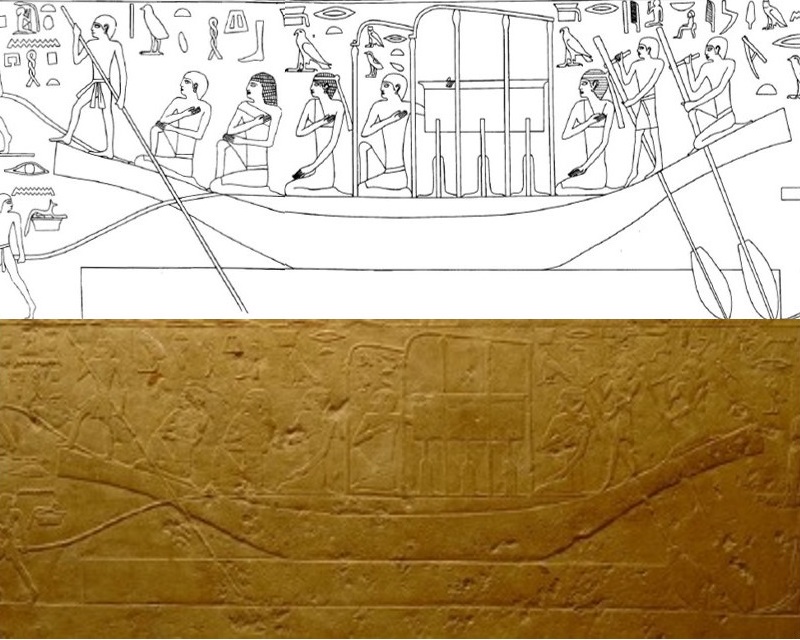
Why a supposed lector priest there? the doubt is there…
The Mourners.
On the top of the upper register we can distinguish five figures of mourners, all of them are sitting on the cabin and are wrapped in a kind of shroud. It is very difficult to detect their gender, but very likely they would be men and women.
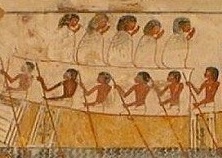
Given that they are part of the cortege but not accompanying the corpse at both sides, they would be common mourners, that took part in funerals of ancient Egypt.
However their attitude misleads, because the common mourners in ancient Egypt were depicted with dynamism: raising hands or arms, beating themselves, covering their eyes with their hand, pulling hair…; all gestures expressing despair . In fact the corporal language of the mourners in this wall painting presents a quite controlled attitude, typical of the professional mourners of Ancient Egypt.
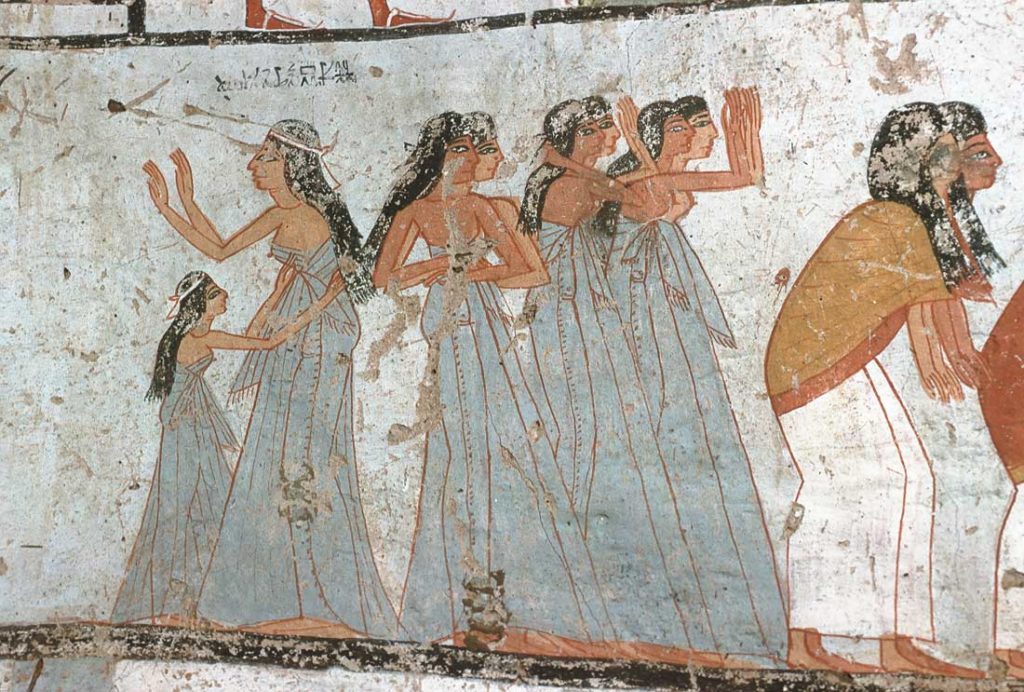
It is true that the scene from the tomb of Neferhotep present the group of common mourners in a very dynamic attitude; while in the tomb of Userhat we find over the cabin a group of seven sitting men very quite.
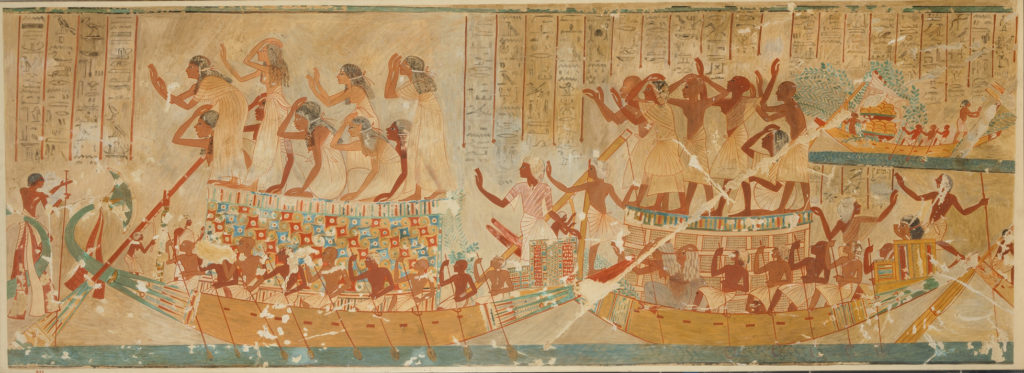
The mourners of our scene seem a mix between both.
…strange…
The Gap.
There is also something that pays my attention: the gap at the left of the row of mourners. It seems quite clear that there were another image of a mourner at the edge of the cabin. Why?
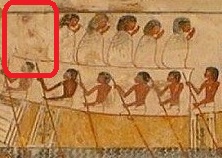
* There is the free space.
*In the bottom row there are six oarsmen, and six mourners would be in the upper row. We would have a symmetrical image, one of the standards in the art of ancient Egypt.
*It seems as if the image would have been erased.
Oddities.
This wall painting is for me strange; there are things that do not fit:
- The supposed “lector priest”.
- There is a lack of dynamism and movement in the common mourners.
- The “erased” mourner.